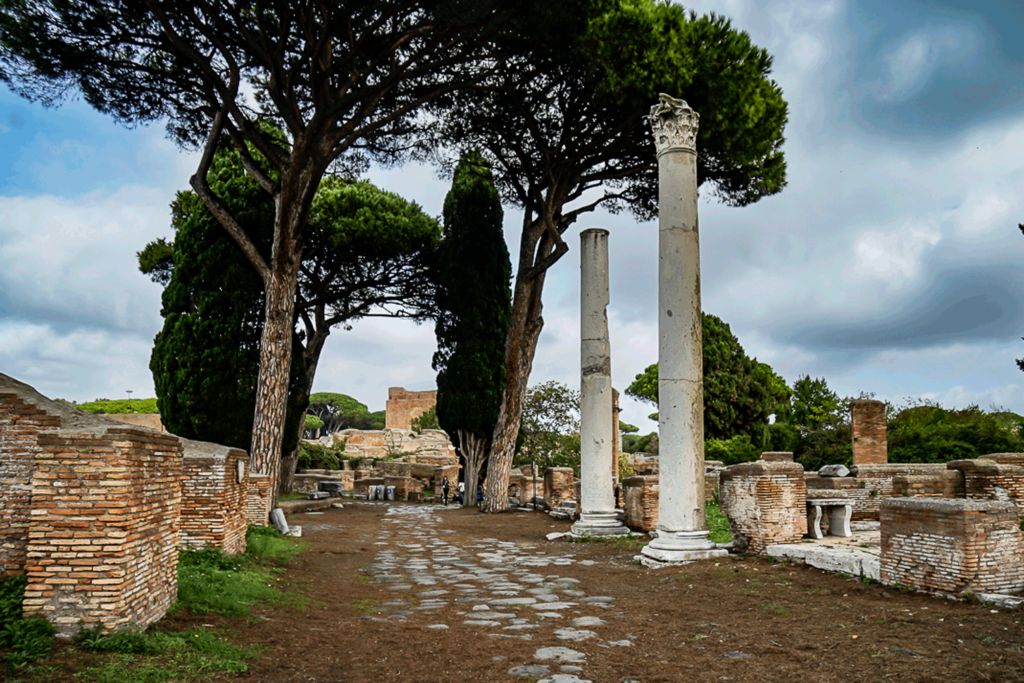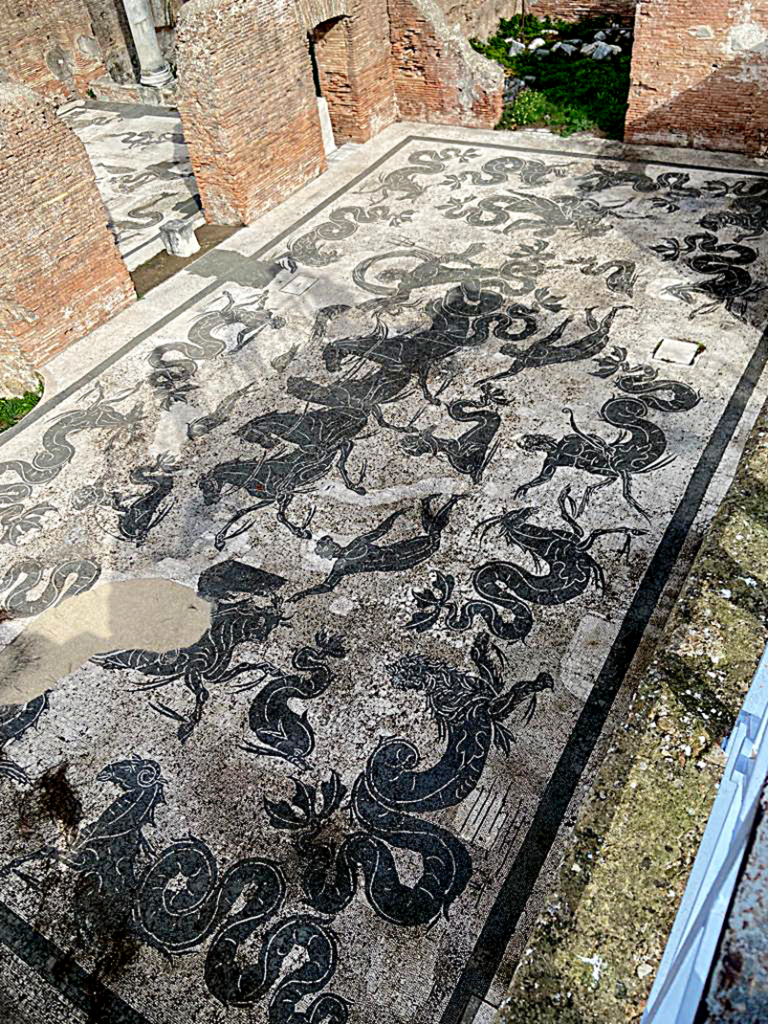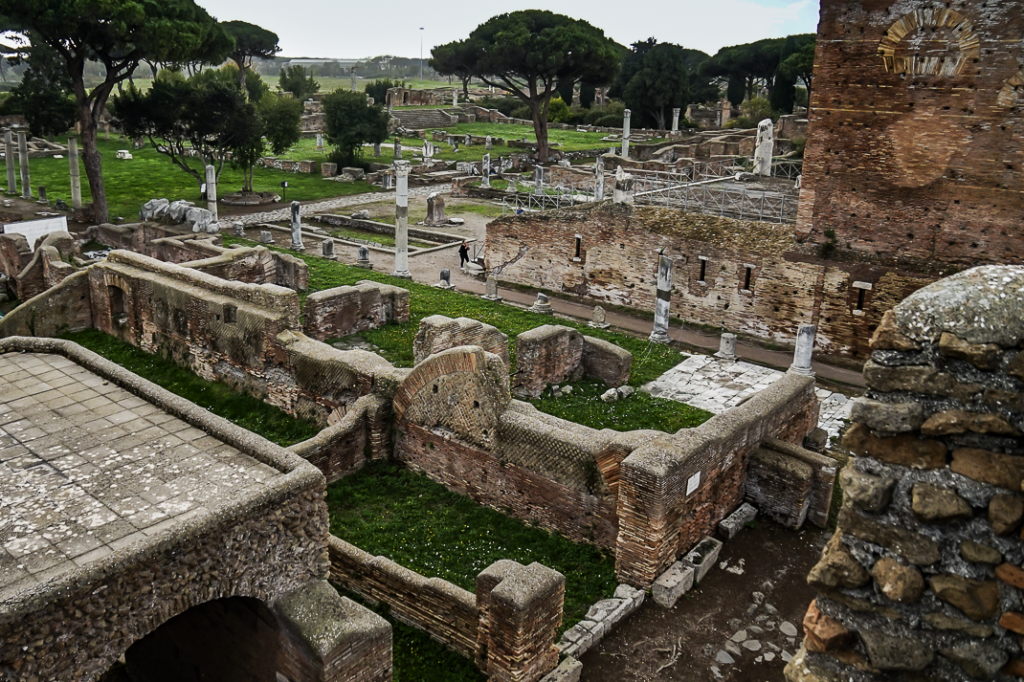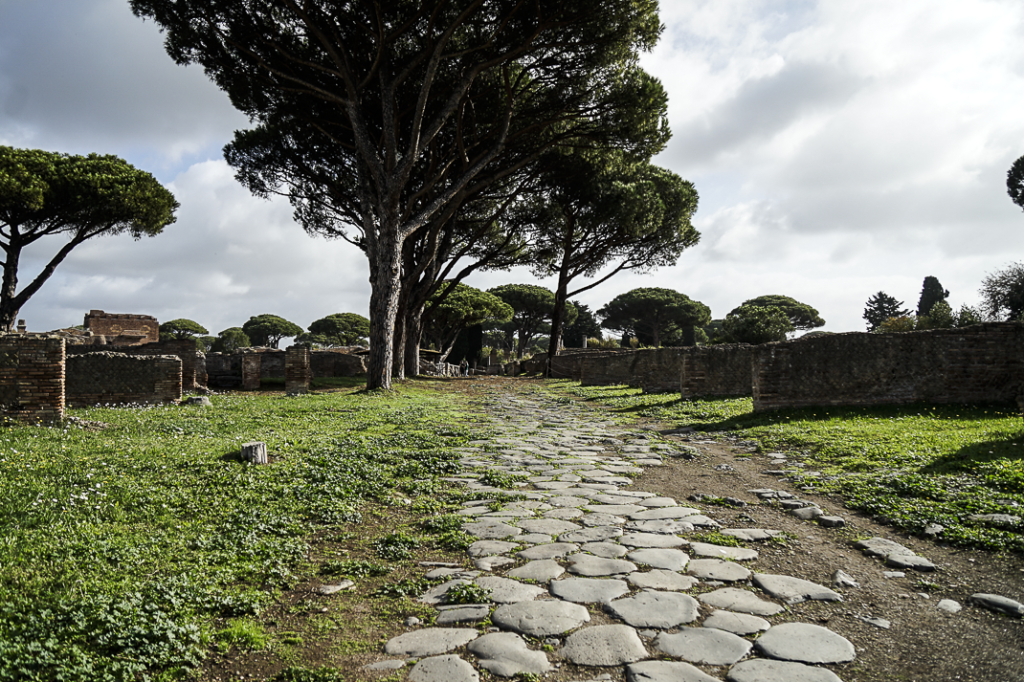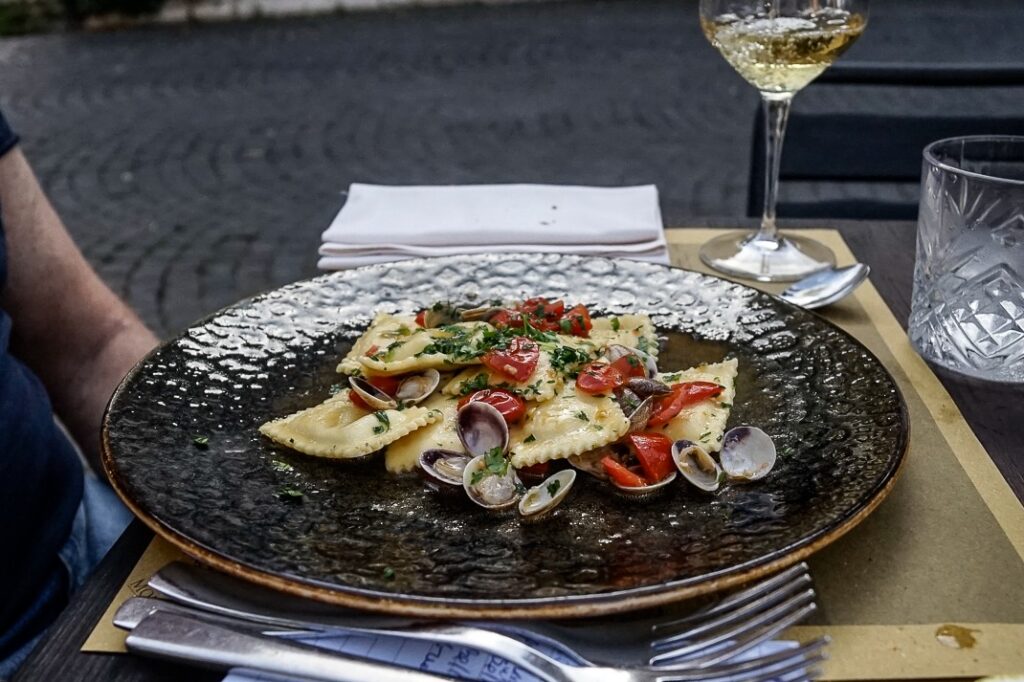Ostia Antica: A poor man’s Pompeii
If you’ve been in Rome a while and are tired of the crowds, you don’t have to go to Pompeii to see well-preserved ruins of an ancient, wealthy city.
Come to Ostia Antica. It’s closer. It’s only 25 miles southwest of Rome and the ruins are just as thought provoking. Ostia Antica’s history isn’t as sexy. The city wasn’t buried by volcanic ash. It fell along with the rest of the Roman Empire.
But scattered over a 370-acre (150-hectare) complex are villas, temples and an amphitheatre that still hosts theater and dance productions. Ostia Antica was founded in the 4th century B.C. and began as a fortified military camp guarding the mouth of the Tiber River on the Tyrrhenian Sea.
“Ostia” comes from the Latin word ostium (mouth). In the 3rd and 2nd centuries B.C. it served as a Roman naval base. It drew the working class and the wealthy and by the 2nd century A.D. had 50,000 people. But as the Roman Empire began to crack, the Goths invaded Ostia Antica in 410 A.D. By the 9th century it had been abandoned, its ruins covered in silt.
By the 18th century its population was only 150. Today the site has been uncovered in a neighborhood, now incorporated into Rome, with a thriving population of 10,500.
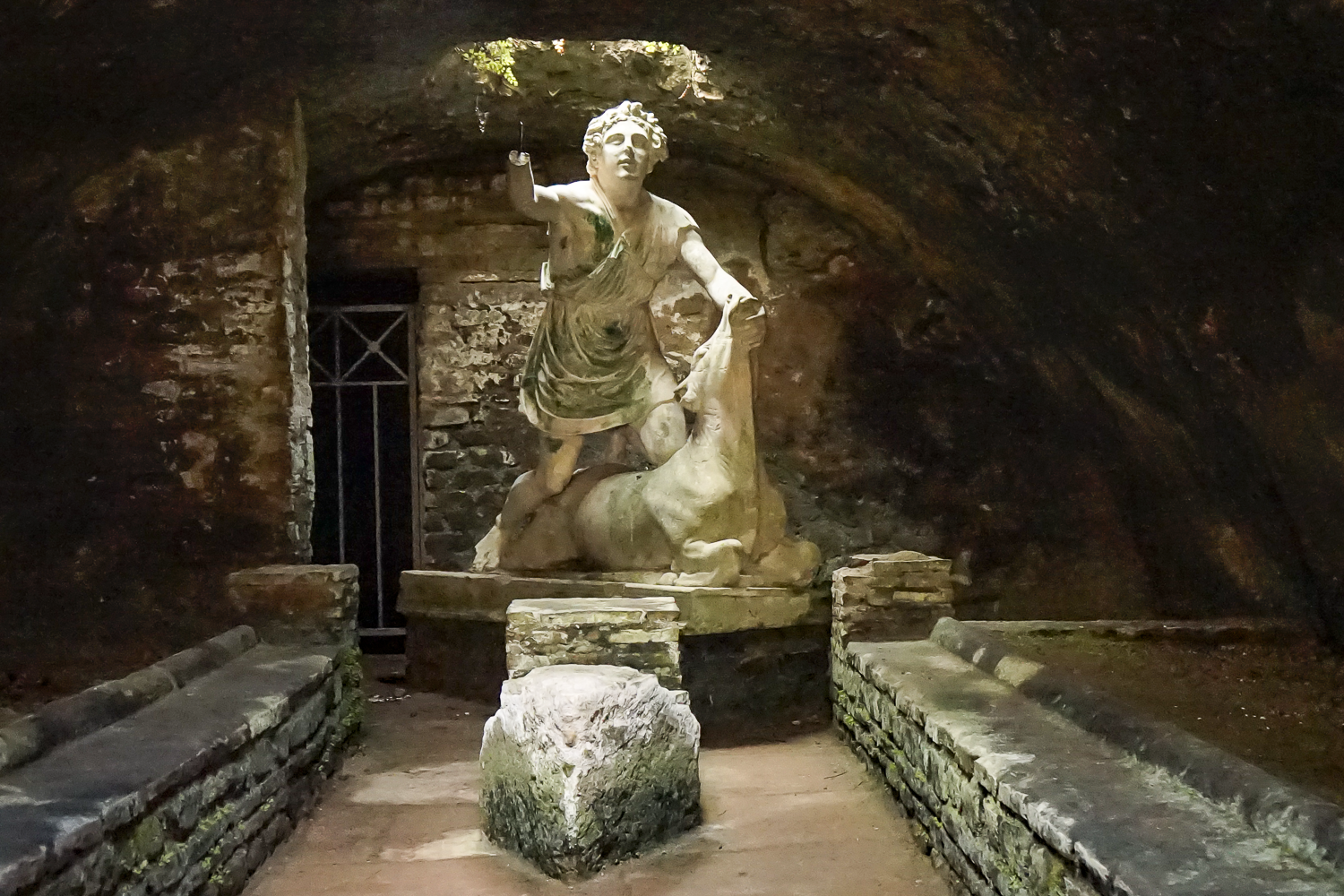
Things to do
1 • Parco Archeologico di Ostia Antica.
We went Wednesday on a beautiful 70-degree day. Except for a small school group from France, we only saw about 20 other people. If you walk the entire complex, it’s about five miles (nine kilometers). A shuttle driver drove us and two other couples about halfway down. Even though he wasn’t a tour guide, he got out and explained points of interest.
The area is an entire metropolis of red-brick walls. He took us through one complex that was once a store. At the end of a hallway was a statue depicting a man on the back of a bull holding a knife to its throat. Roman soldiers brought back Persians’ religion after their conquest and sacrificed the bull to the gods. He showed us a deep brick fire pit they used to heat some of the 16 thermal bath areas.
One had a large changing room featuring the imprint of a goat’s hoof from 2,000 years ago embedded in the stone. We saw a public toilet: a stone slab with two open holes serving as seats. On our own, we walked along the original stone pathways lined with towering, majestic Mediterranean pine trees.
Herons and pheasants hovered in the air and roamed the grounds. Porto Marina is a big brick complex behind a huge arch with the top missing. This was a dressing and cleaning area for athletes. Mosaics depict javelin and discus throwers and wrestlers.
Off in the distance we could see three columns, the lone remains of what was the first synagogue in Europe. Ostia Antica was wealthy. Many Roman aristocrats lived here. The remains of two- and three-story villas dot the complex.
We climbed to the top for great panoramic views of the area. The two must-sees are Terme di Nettuno and the amphitheatre. The Terme di Nettuno, built in the 2nd century A.D., is three large rooms with elaborate mosaic designs of Amphitrite, Neptune’s wife, riding a seahorse and Neptune with a trident riding a four-horse chariot shepherded by dolphins. The third room has an eerie mosaic of Scylla, the legendary sea monster that killed sailors. Terme di Nettuno is next to the amphitheatre with 23 rows of grandstand seats.
Info: Viale dei Romagnoli 717, Rome, 39-06-563-58099, https://www.ostiaantica.beniculturali.it/, pa-oant@cultura.gov.it,
€19. €2 shuttle.
Don’t bother with the audio guides. Each site is well signed in Italian and English.A
2 • Castello di Giulio II.
Across the street from Ostia Antica’s entrance is a 15th century castle covered in turrets. It was built as a defense of the Tiber’s final stretch.
Inside you’ll find a papal apartment lined with 15th and 16th century frescoes. In 1556 after the conquest of Spanish troops, the castle was abandoned. Later it became used as a prison. It now houses the offices of the Superintendent for Archaeological Heritage of Ostia.
Info: Piazza della Rocca 13, 39-06-5635-8013, https://www.ostiaantica.beniculturali.it/it/home/,
10:30 a.m.-4:30 p.m. Nov. 1-Feb. 10, 10:30 a.m.-7:30 p.m. March 1-June 10, 1:30-7:30 p.m. June 16, Oct. 31, €7.
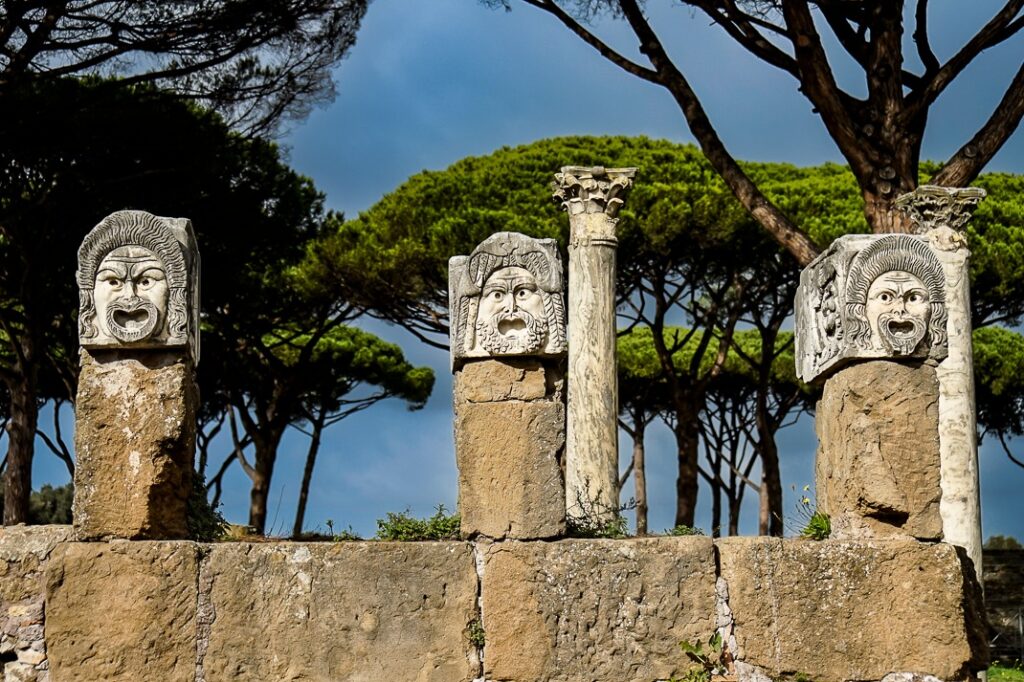
Life in Ostia Antica
When Ostia Antica was the main port for Rome, the city resembled a mini Rome. People shopped in stores, prayed in temples, hung out in the forum, went to the theater and socialized in the public baths.
The difference is as a port city, much of Ostia Antica revolved around importing and exporting. Grain, Ancient Romans’ chief diet staple, was the main import and an entire business revolved around cataloging, storing and protecting the shipments.
Various areas of the port were designated for selling meat, vegetables, furniture, tapestries, etc. Most shops lined the river with the mouth at the Tyrrhenian Sea.
Since then, silt has caused the coastline to move a mile to the west. However, you can still see boats docked not far from the site.
Ostia Antica was a thriving, rich community with elaborate villas featuring beautiful mosaics. The working class lived in large, stable apartment houses, not the cave-like hovels you see near Rome’s Campidoglio.
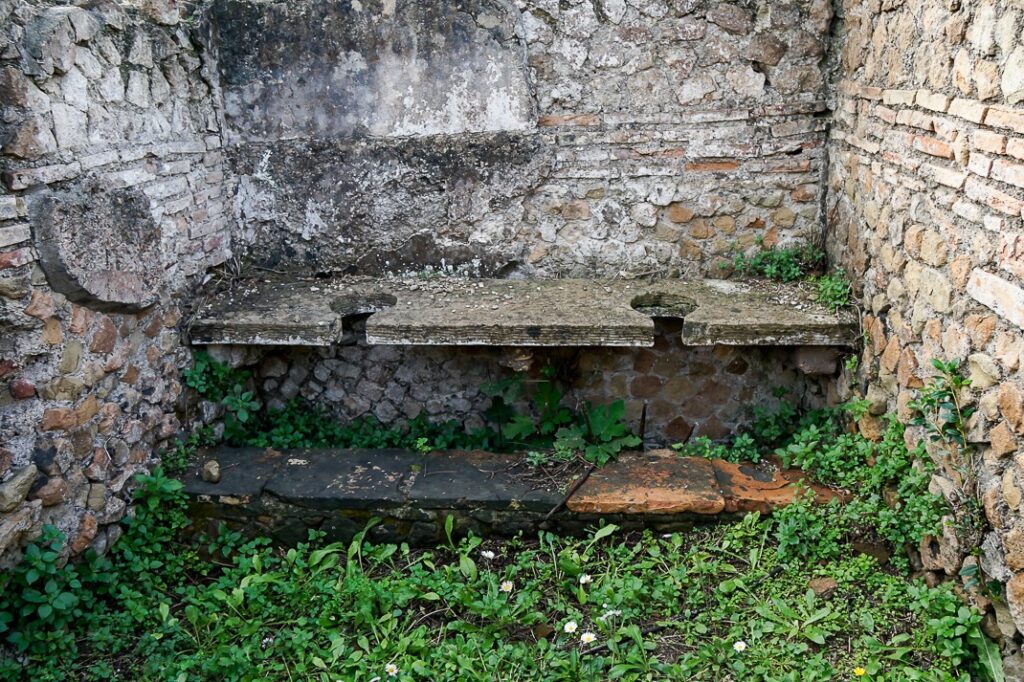
Where is it:
25 miles (40 kilometers) southwest of Rome.
Trains leave Basilica San Paolo Station in the Ostiense neighborhood every 20 minutes.
The 23-minute journey is about €2. Ostia Antica Station is a short walk to the archaeological site.
For more information:
pa-oant@cultura.gov.it.
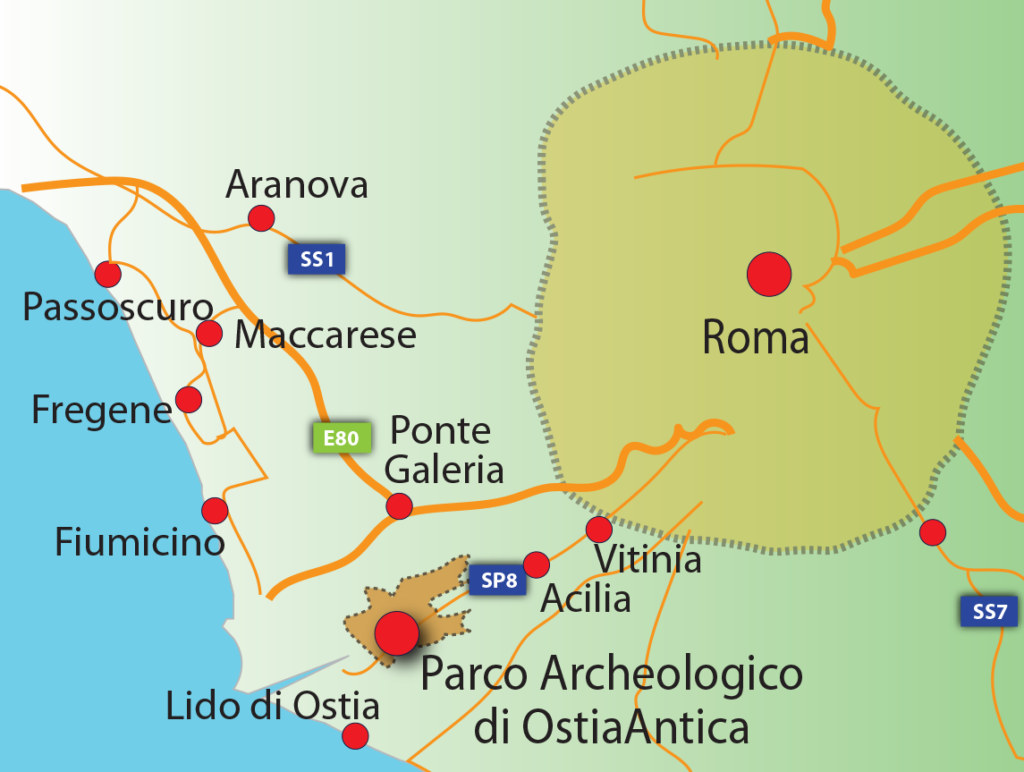
Where to eat:
Ristorante Monumento, Piazza Umberto 1, 39-06-565-0021,
http://www.ristorantemonumento.it/, 11:30 a.m.-11 p.m.
Opened in 1884, it originally hosted local hunters and men working on the marshes.
Now it’s a high-end seafood restaurant with outdoor seating near the gate entrance to the neighborhood’s historical center. Mains €15-€20.
Try the fish ravioli, fish-stuffed square pasta sprinkled with tiny clams and cherry tomatoes.
Lunch for two with wine was €54.




